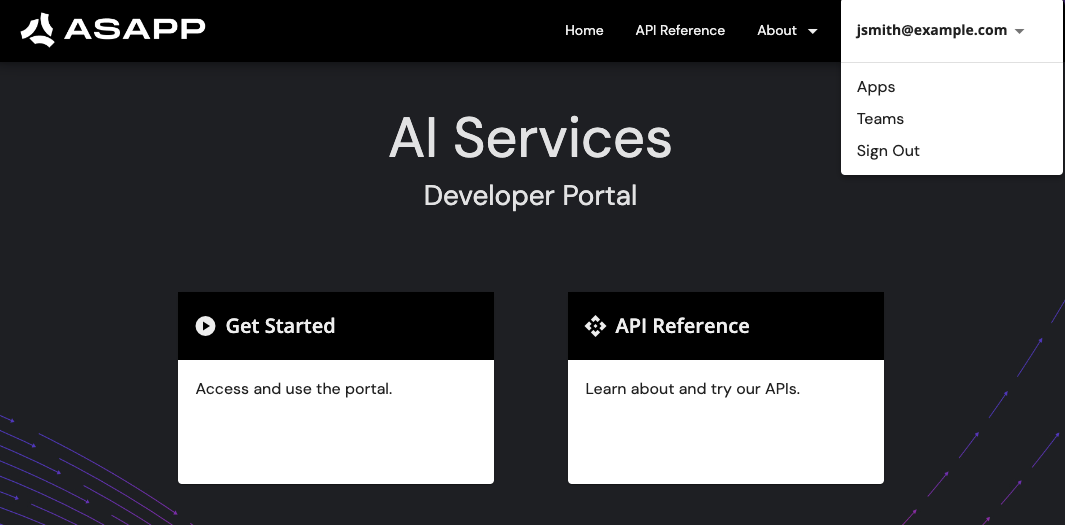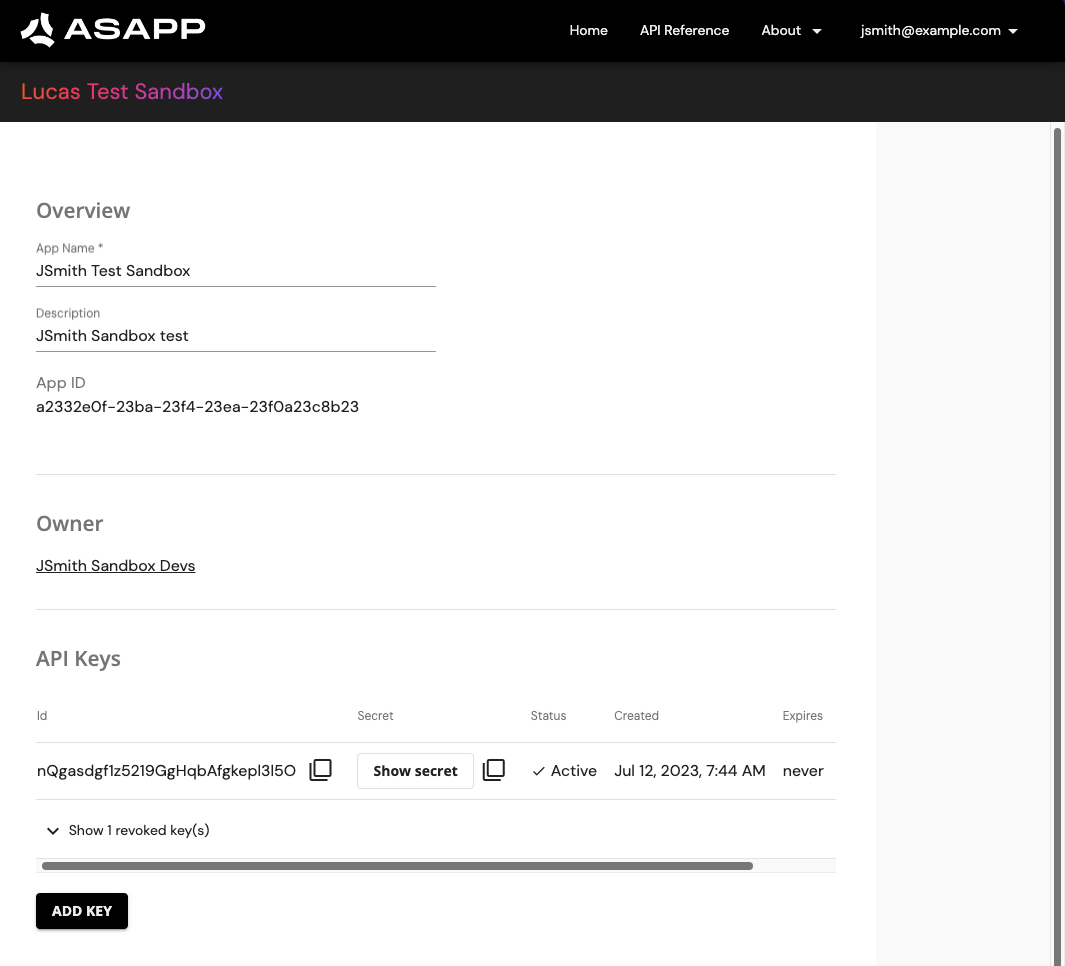Most of ASAPP’s products require a combination of configuration and implementation, and making API calls is part of a successful integration.
If you are
only integrating ASAPP Messaging and
no other ASAPP product, then you can skip this quickstart and go straight to
ASAPP Messaging guide.
Log in to the developer portal
The developer portal is where you will:
- Grant access to developers and manage your team.
- Manage your API keys.
As part of onboarding, you would have appointed someone as the Developer Portal Admin. This user is in control of adding users and adjusting user access within the Dev Portal.
Managing the developer portal
The developer portal uses teams and apps to manage access.
The members of your team can have one of the following roles:
- Owner: This user controls the team; this user is also called the Developer Portal Admin.
- App Admin: These users are able to change the information on applications owned by the team.
- Viewers: These users can view API credentials, but cannot change any settings.
Apps represent access to all of ASAPP’s products. Your team will already have an app created for you. One app can access all of ASAPP’s products. There can be one or more keys for the app; by default, an initial API key will already be generated.
The ASAPP email login or SSO only grants access to the dev portal, all permission and team management must be done from within the developer portal tooling.
Understand Sandbox and Production
Initially, you only have access to the sandbox environment and we will create a Sandbox team and app for you. The sandbox is where you can initially build your integration but also try out new features before launching in production.
The different environments are represented in ASAPP’s API Domains:
| Environment | API Domain |
|---|
| Sandbox | https://api.sandbox.asapp.com |
| Production | https://api.asapp.com |
All requests to ASAPP sandbox and production APIs must use HTTPS protocol. Traffic using HTTP will not be redirected to HTTPS.
Moving to Production
Once you are ready to move to launch with real traffic and move to production, request production access. Tell your ASAPP account team which user will be the Production Developer Portal Admin. ASAPP will create a dedicated production team and app that you can manage as you did for the sandbox team and app.
Access API Credentials
To access your API credentials, once you’ve logged in:
- Click your username and click Apps
- Click your Sandbox App.
- Navigate down to API Keys and copy your API Id and API Secret
Save the API Id and Secret. All API requests use these for authentication.
Make First API Call
With credentials in hand, we can make our first API call. Let’s start with creating a conversation, the root entity for any interaction within a call center.
This example creates an empty conversation with required id from your system. You need to include the API Id and Secret as asapp-api-id and asapp-api-secret headers respectively.
curl -X POST 'https://api.sandbox.asapp.com/conversation/v1/conversations' \
--header 'asapp-api-id: <API KEY ID>' \
--header 'asapp-api-secret: <API TOKEN>' \
--header 'Content-Type: application/json' \
--data '{
"externalId": "con_1",
"customer": {
"externalId": "cust_1234"
},
"timestamp": "2024-12-12T11:42:42Z"
}'

